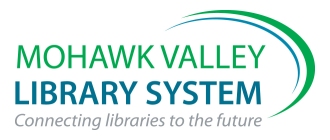 |
START WITH SCIENCE KITS
Science Programs for Children Ages 4 and 5 |
Objectives
- General: To provide opportunities to experiment with the five senses.
- Specific:
- To show how eyes work for sight.
- To show how nose smells things.
- To show how ears work for hearing.
- To show how the tongue senses taste.
- To show how nerves sense touch.
|
Books : (In kit)
- 2 copies – Sense Suspenseby Bruce McMillan
|
Equipment : (In kit)
- Glove
- 2 Cloth diapers
- Cotton balls
- 8 Flashlights
- 10 Mirrors
- Plastic Scrubber
- Plastic toothbrush
- Rubber bands (assorted)
- Sandpaper
- 5 Spoons with string
- 4 Tuning forks (various sizes)
- Fake fur
- Feathers
|
Consumables : (To be supplied by you)
- Batteries for back-up (2 size D)
- Clear plastic cups (10)
- “ Just enough needed to cover bottom of plastic cup”
- unsweetened baking cocoa, apple, onion, cider vinegar, vanilla, sugar, salt, powdered sugar, flour
|
Resource Book : (Contact your local library to borrow)
- Stone, A. Harris. Science Projects That Make Sense. McCall Pub. Co., 1971.
|
Bookmarks : (In kit)
- Paper copies of the bookmark are included in the kit. PDF and JPEG copies are available here.
- PDF – 4 bookmarks per page. Ready to print in color.
- JPG – single high quality jpeg image.
|
Program
- Objectives
- General: To provide opportunities to experiment with the five senses.
- Specific:
- To show how eyes work for sight.
- To show how nose smells things.
- To show how ears work for hearing.
- To show how the tongue senses taste.
- To show how nerves sense touch.
- Introduction
- Today we are going to explore our senses.
- Can anyone tell me what a sense is? (It is something that tells us about our surroundings.)
- What are our senses? (Smell, taste, touch, hearing, sight)
- What do we use to have these senses? (nose, tongue, skin, ears, eyes)
- If a person lacks the ability to see, he is blind.
- If a person lacks the ability to hear, she is deaf.
- Program
- Now that we have some idea about what our senses are, let’s have a story which includes some of them. Then we will try out some ways of using our own senses. Let’s begin with the book, SENSE SUSPENSE by Bruce McMillan. (Briefly review senses covered in story.)
- Now let’s go over to the table which I have set up with experiments for the five senses.
- Flashlights & mirrors – Have children choose a partner so one holds the mirror and the other shines a flashlight into the eye. Watch what happens to the pupil. Now switch positions.
- Tuning forks – Strike the forks gently on the table and then hold on the table and listen to the sound. Do they sound different? Make your own tuning fork with spoon and string. Does it sound the same as the regular ones? Rubber bands – stretch and pluck – how do they sound?
- Cups of vanilla/vinegar; sugar/salt; powdered sugar/flour; apples/onions – Do items look similar? Do they smell the same? Dip your finger in and then taste your finger. Do they taste the same? Cocoa powder – smells great, how does it taste?
- Toothpicks and feathers – Work with a partner. Have one child close eyes and the other person touch him gently on the cheek with a feather and a toothpick. Can the blindfolded child tell which is which? Repeat on an arm. Is it easier to tell the difference?
- Cotton – Does it feel different in a cotton ball rather than woven into a diaper? (interesting to see if they even recognize a cloth diaper!)
- Plastic – Different feel in a toothbrush rather than in a pot scrubber.
- Sandpaper – Feel difference between coarse and fine.
- General
- Now that each of you has had a chance to experiment with your senses, do you remember how many senses you have?
- What are they?
- What do you think you use the most?
- What do you think is the most important?
- What is your favorite sense?
|
Evaluation
Please print this evaluation, complete it and return to MVLS in the SWS red envelope.
Topics | About the Kits | Lending Policy

